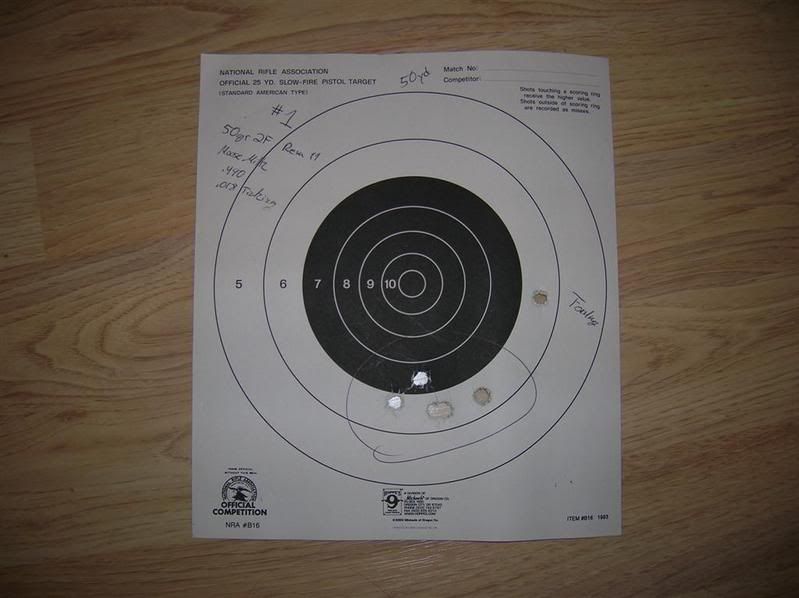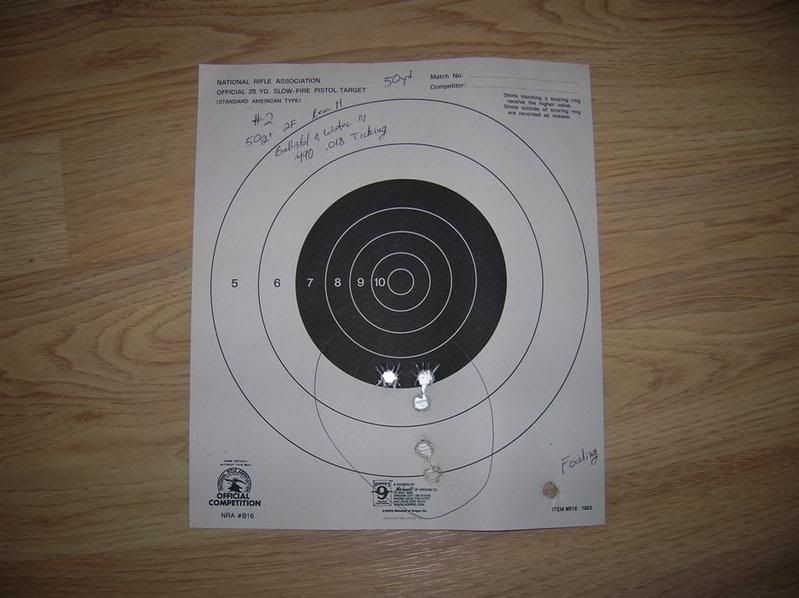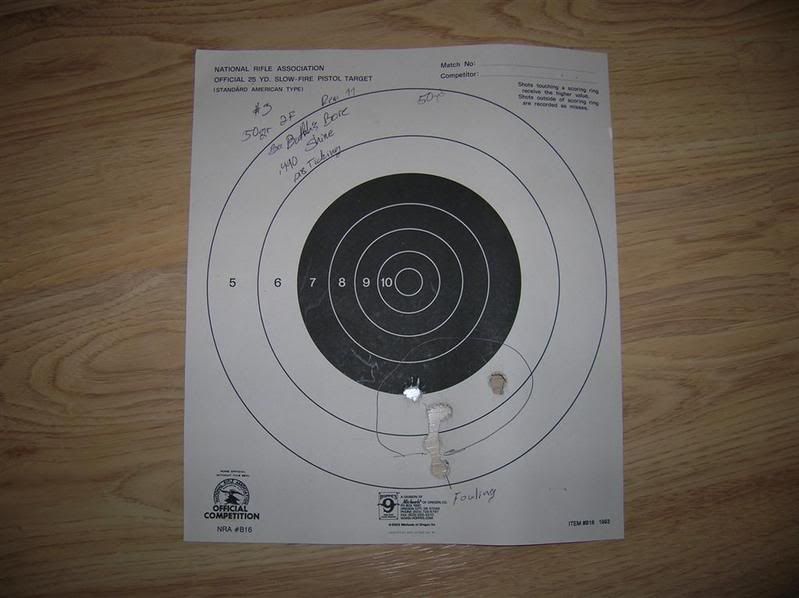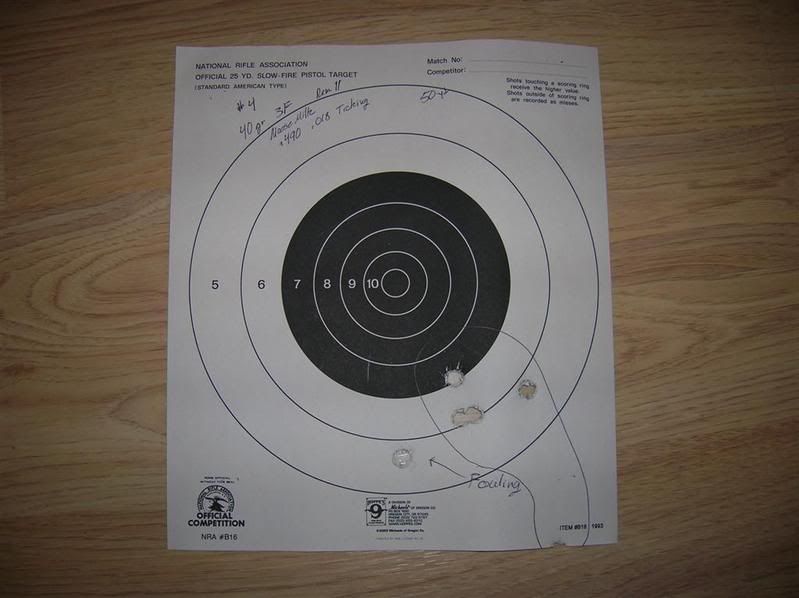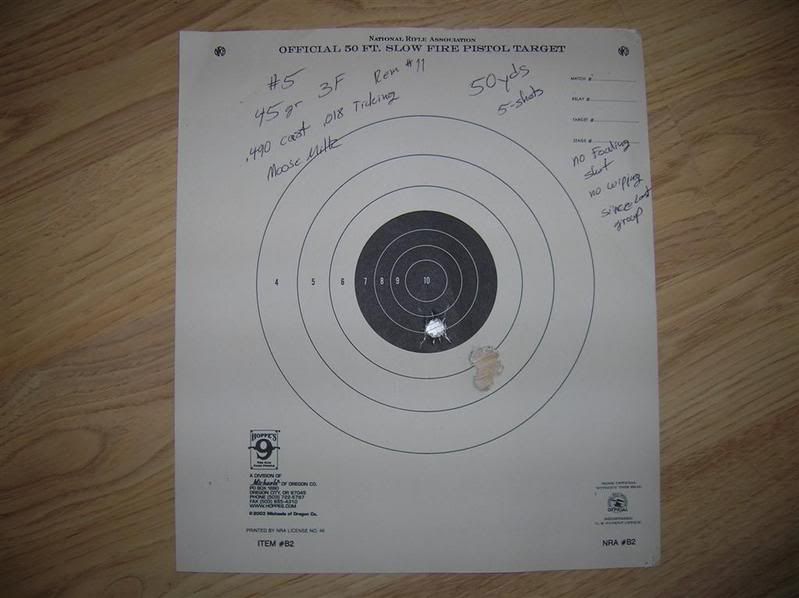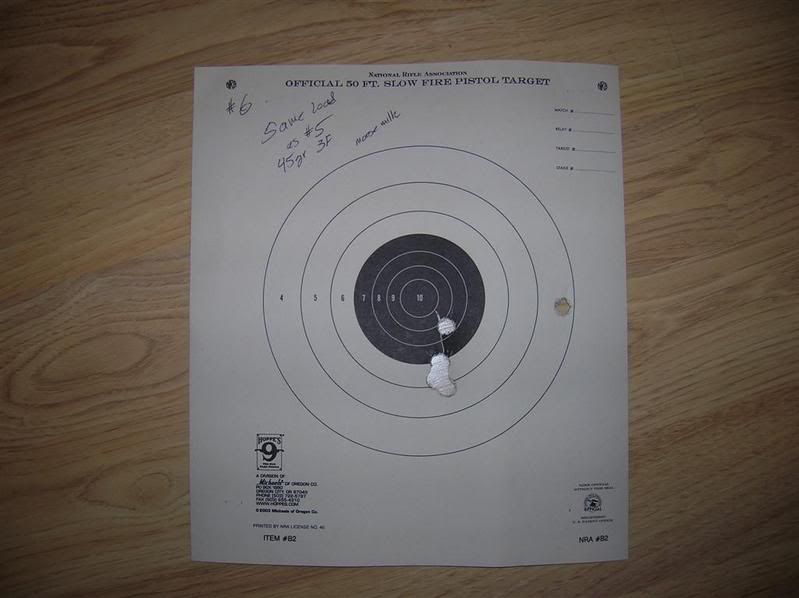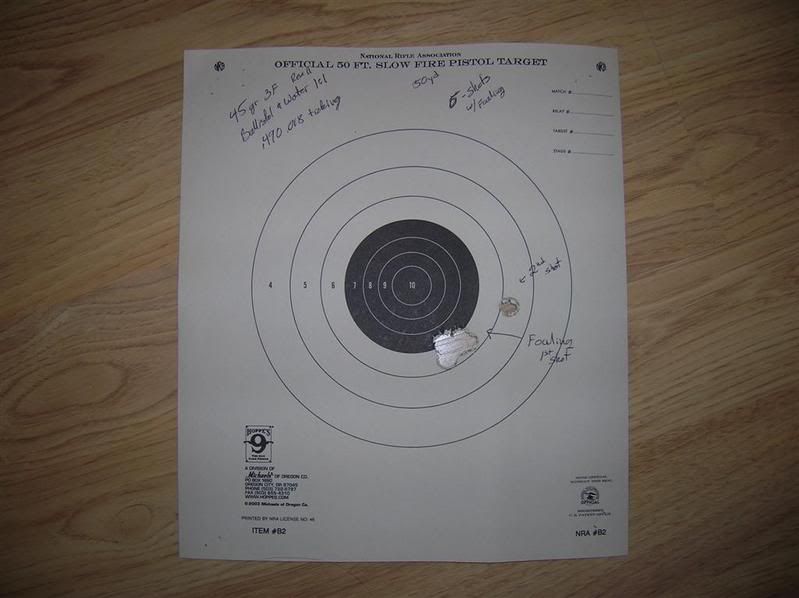Last night I cleaned some nasty brown crap out of my GPR. It was probably the original, industrial strength, won’t come off if you tried, grease that Lyman coats the inside of their barrels with from the factory. I had not cleaned it out with 00 steel wool, per Lyman’s instructions, before I started shooting. By this time my rifle had about 75 shots through it, all with T/C natural-lube which may have left some sort of its own varnish in there as well.
Before I started with the steel wool, I ran a couple of solvent dampened patches down bore and they came back perfectly clean. Then I did a few swipes with steel wool wrapped around an old .22cal bronze brush, next I followed with a solvent dampened patch- when that patch came out it looked like a gorilla had wiped his butt with it :shocked2: I’d swipe some more until I got a clean patch then more swipes with the steel wool followed by more patches. Eventually my patches started coming out with less and less monkey poo’ smeared on them and finally they started coming out clean.
Now that I’ve actually got a smooth, clean bore, devoid of primate excrement, I’m going to try some different patch lubes. I plan on just trying a few different patch lubes per range trip and then narrowing down my choices. My patch lube choices for this weekends range trip are; gen-u-ine Winchester Sutler’s “Moose Milk”, Butch’s BP Bore Shine (a bottle came with my GPR) and a Ballistol / Water solution. Next trip I’ll probably try Stumpy’s moose juice, Hoppe’s #9 Plus BP solvent and Lehigh Valley patch lube.
Questions for this weekend’s lube try-outs:
- With the Ballistol / Water solution, what ratio should I use? The instructions on the Ballistol can suggest a 50/50 mix with water for a “black powder solvent”. I don’t know if that also means for a patch lube though? Should I start with a 1:1 ratio or pour more water into the mix?
- After soaking a strip of ”˜ticking, should I let it air dry overnight?
- If the water evaporates from my lubed ”˜ticking strips, wouldn’t this make the patch lube less effective since water itself is a BP solvent?
I’ve pretty much always used pre-lubed NL/WL patches or lubed them myself with the same. I’m hoping to find a good patch lube that doesn’t leave a coating of crud in the bore, allows for multiple shots without needing a swipe and is both barrel and BP friendly.
Thanks,
Before I started with the steel wool, I ran a couple of solvent dampened patches down bore and they came back perfectly clean. Then I did a few swipes with steel wool wrapped around an old .22cal bronze brush, next I followed with a solvent dampened patch- when that patch came out it looked like a gorilla had wiped his butt with it :shocked2: I’d swipe some more until I got a clean patch then more swipes with the steel wool followed by more patches. Eventually my patches started coming out with less and less monkey poo’ smeared on them and finally they started coming out clean.
Now that I’ve actually got a smooth, clean bore, devoid of primate excrement, I’m going to try some different patch lubes. I plan on just trying a few different patch lubes per range trip and then narrowing down my choices. My patch lube choices for this weekends range trip are; gen-u-ine Winchester Sutler’s “Moose Milk”, Butch’s BP Bore Shine (a bottle came with my GPR) and a Ballistol / Water solution. Next trip I’ll probably try Stumpy’s moose juice, Hoppe’s #9 Plus BP solvent and Lehigh Valley patch lube.
Questions for this weekend’s lube try-outs:
- With the Ballistol / Water solution, what ratio should I use? The instructions on the Ballistol can suggest a 50/50 mix with water for a “black powder solvent”. I don’t know if that also means for a patch lube though? Should I start with a 1:1 ratio or pour more water into the mix?
- After soaking a strip of ”˜ticking, should I let it air dry overnight?
- If the water evaporates from my lubed ”˜ticking strips, wouldn’t this make the patch lube less effective since water itself is a BP solvent?
I’ve pretty much always used pre-lubed NL/WL patches or lubed them myself with the same. I’m hoping to find a good patch lube that doesn’t leave a coating of crud in the bore, allows for multiple shots without needing a swipe and is both barrel and BP friendly.
Thanks,





